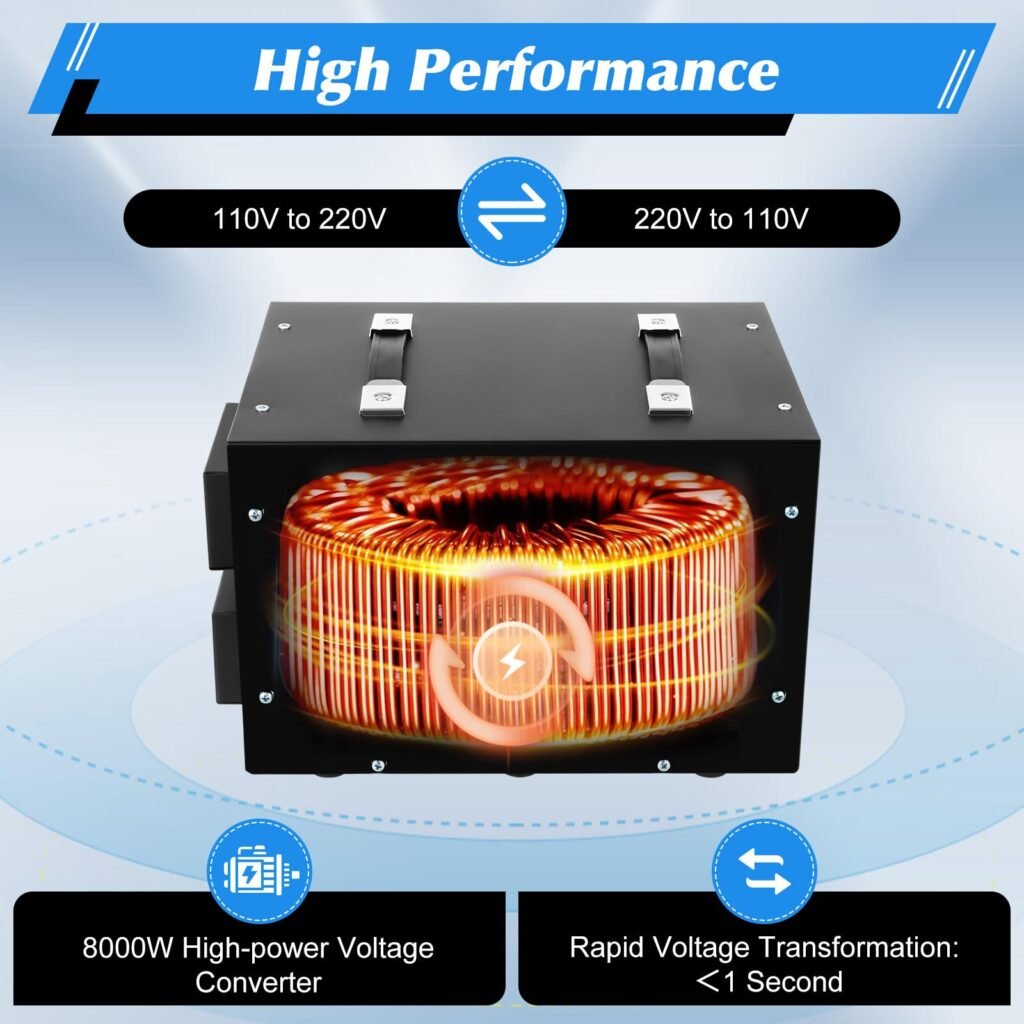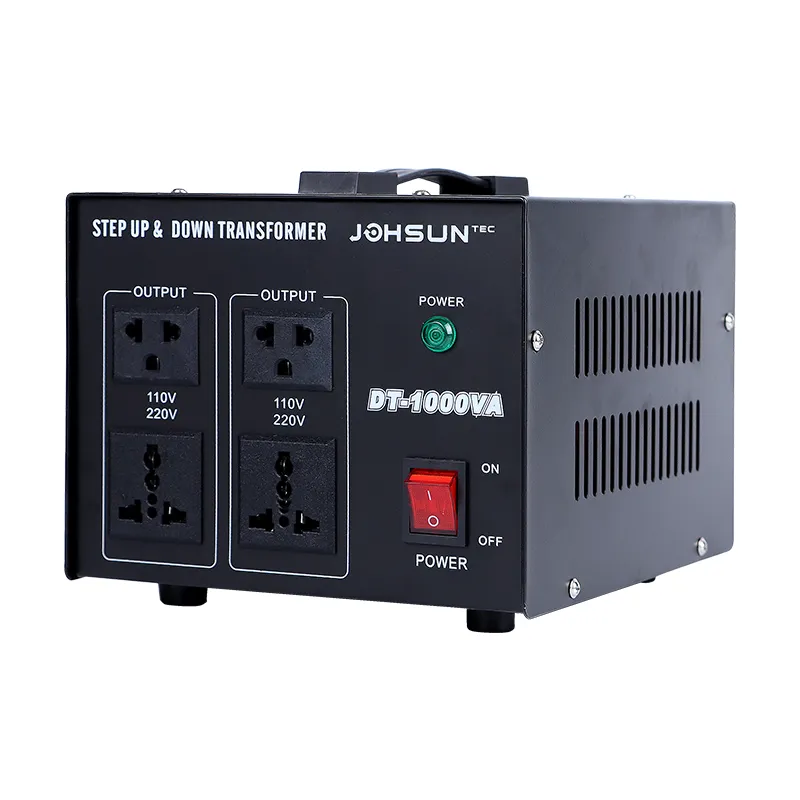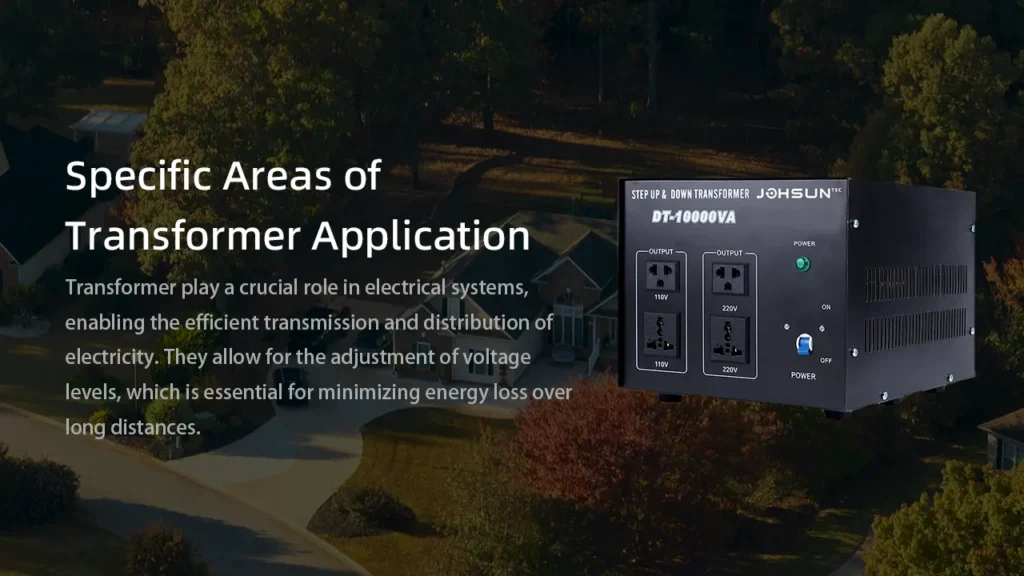How to Choose the Step-Up and Down Transformer 5-key point
In modern industrial and commercial power systems, step-up and down transformer act as the “gatekeepers” of electricity. Whether for factories, data centers, or hospitals, selecting the right transformer isn’t just about equipment safety—it directly impacts operational efficiency and cost control. If you’re struggling with decision-making, keep reading—your next procurement choice might become effortless!
What Are Step-Up and Down Transformer?
Step-Up and Down Transformer adjust voltage to meet diverse equipment needs. A step-up transformer increases voltage (e.g., for power transmission), while a step-down transformer reduces voltage (e.g., for factory machinery or medical devices).
How Do They Work?
Using electromagnetic induction, transformers transfer energy between primary and secondary coils. Voltage changes depend on the coil turns ratio: more turns = higher voltage, fewer turns = lower voltage.
Common Applications
- Power Transmission: Step-up transformers reduce energy loss during long-distance transmission; step-down variants ensure safe local distribution.
- Industrial Equipment: Machines often require specific voltages—transformers bridge the gap between power sources and devices.
- Healthcare/Data Centers: Stability is critical here. Step-down transformers protect sensitive equipment.
- International Electronics: Transformers help imported devices adapt to local grids.
Key Factors for Choosing Step-Up and Down Transformer
1. Define Your Needs
- Voltage/Current Requirements: Identify input/output ranges (e.g., 380V three-phase for factories vs. 220V single-phase for labs).
- Application Scenarios: Prioritize stability for hospitals, durability for factories, or precision for automation systems.
2. Technical Specifications
| Parameter | Why It Matters |
|---|---|
| Capacity (kVA/VA) | Must exceed actual load to avoid overloads. |
| Efficiency | Higher efficiency = lower energy costs. Check manufacturer specs. |
| Temperature Rise | Lower values extend lifespan, ideal for hot environments. |
| Voltage Ratio | Match coil turns to your voltage needs. |
| Frequency | Ensure compatibility (50Hz/60Hz). Mismatches can damage equipment. |
| Phase Type | Single-phase for small devices; three-phase for heavy machinery. |
3. Safety & Compliance
- Certifications: Look for IEC, UL, or ISO marks—these guarantee safety standards.
- Protection Features: Overload/short-circuit protection prevents accidents.
- Insulation & Enclosure: Robust insulation and weatherproof casing enhance durability.
4. Environment & Installation
- Operating Conditions: Indoor/outdoor use? High humidity or dust? Choose IP-rated models accordingly.
- Space Constraints: Measure installation areas. Wall-mounted or floor-standing? Plan ahead.
5. Cost & Support
- Budget: Consider lifecycle costs (energy consumption, maintenance).
- Supplier Reliability: Partner with experienced manufacturers for technical support and warranties.
Real-World Applications & Selection Tips
Case Studies
| Industry/Scenario | Recommendations |
|---|---|
| Factory Power | High-efficiency, three-phase step-down transformers with overload protection. |
| Medical Devices | Low-temperature-rise, isolated transformers meeting IEC standards. |
| Data Centers | High-capacity, low-loss transformers with smart monitoring. |
| Automation Lines | Customizable multi-output transformers for flexible voltage adaptation. |
| Commercial Buildings | Standardized transformers with easy maintenance and multi-protection features. |
Pro Tips
- Ask Questions: Clarify specs with suppliers to avoid mismatches.
- Prioritize Certifications: They’re proof of quality.
- Custom Solutions: Unique needs? Opt for tailored designs.
- Plan Maintenance: Choose models with accessible components.
Step-Up and Down Transformer Procurement and Sales Considerations
Procurement Tips
- Allow for Power Surges: Always buy a transformer with a margin above your device’s rated wattage—at least 100% for most electronics, and 3-4 times for devices with high inrush currents (like power tools or heating appliances).
- Check Voltage and kVA Alignment: Ensure the transformer’s voltage and kVA ratings match your system requirements to prevent energy loss and equipment failure.
- Review Supplier Reputation: Choose suppliers with a proven track record, quality guarantees, and reliable customer support.
- Understand Total Cost: Don’t focus solely on upfront price. Consider efficiency, maintenance, and long-term savings.
- Plan for Supply Chain Delays: Coordinate delivery and installation schedules with your supplier to avoid project delays.
- Gather Documentation: Keep records of maintenance, test results, and certifications for compliance and resale value.
Sales Tips
- Prepare Detailed Information: Take clear photos of the transformer’s nameplate, interior, and exterior to provide to buyers.
- Highlight Compliance: Ensure your transformer meets relevant industry standards (IEEE, ANSI, etc.) to attract top buyers.
- Negotiate Terms: Discuss price, payment, and logistics upfront to avoid misunderstandings.
- Arrange Safe Transport: Coordinate with buyers for secure transformer delivery and handling.
- Test and Certify: Provide evidence that the transformer is electrically functional and free of hazardous substances (like PCBs).
- Leverage After-Sales Support: Offer or request field service and technical support to build trust and encourage repeat business.
Choosing the right step-up and down transformer is like hiring a “guardian” for your power system. The correct choice ensures safety, efficiency, and long-term savings. Still unsure? Contact us today—we offer customized solutions, expert advice, and reliable after-sales support. Don’t let power challenges slow your business growth. Send your inquiry now, and let’s power your success together!





